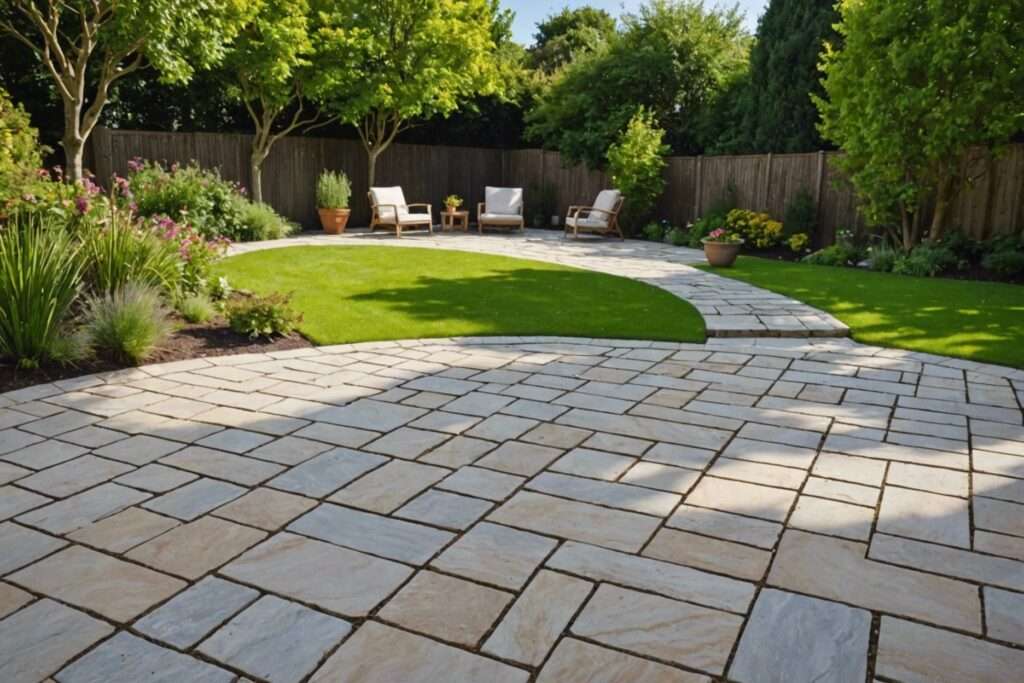
Decoding the Aesthetics of Granite and Sandstone Pavers
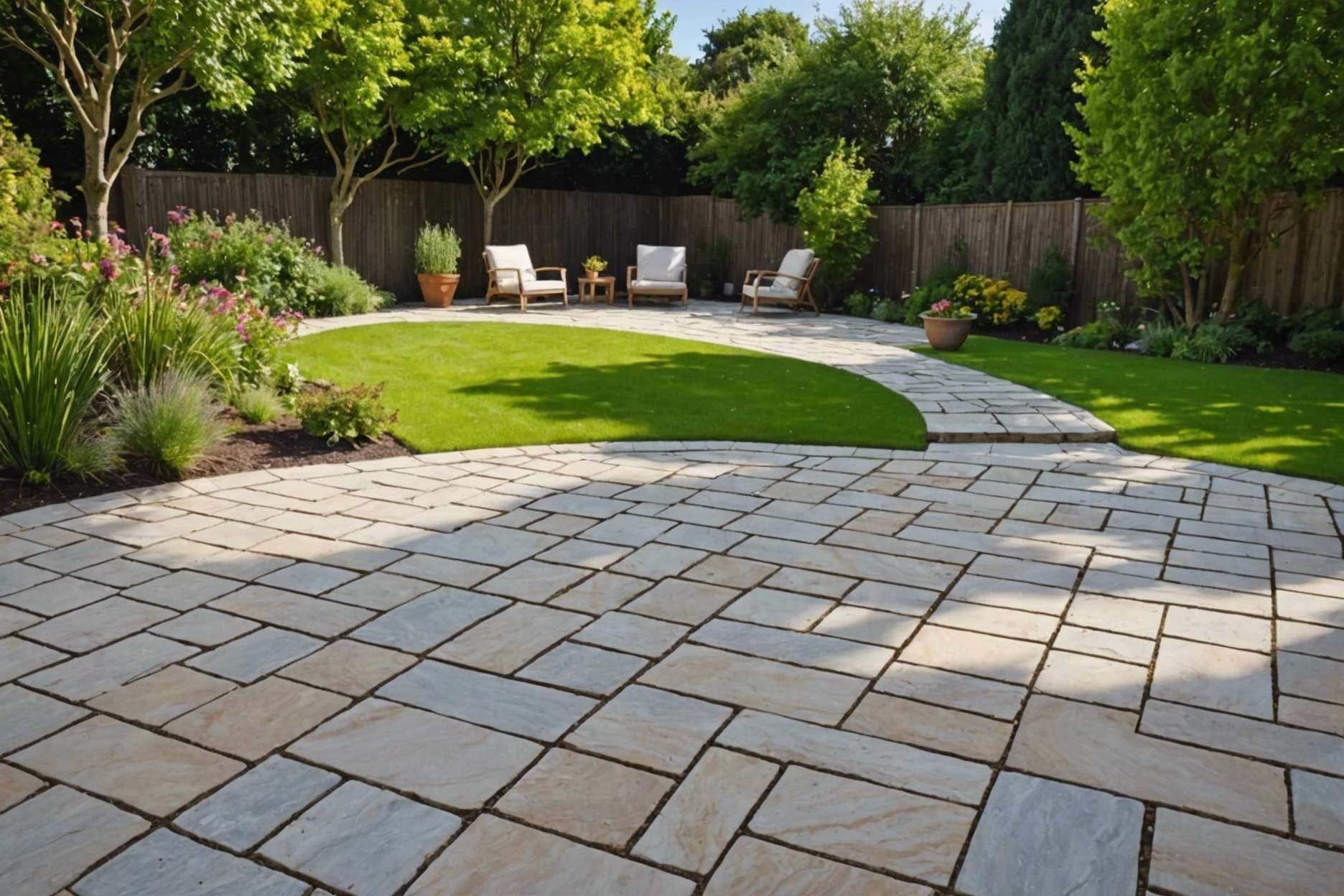
Granite pavers are admired for their robustness and varied colors, providing a traditional, elegant look ideal for durable outdoor applications. Sandstone pavers offer a natural, rustic aesthetic with a softer texture and color variation, suitable for creating warm, inviting outdoor areas.
Introduction to Granite and Sandstone Pavers
Granite and sandstone are popular materials used in construction and remodeling for their unique aesthetic and durable properties. Here’s a closer look at each:
- Granite:
- Originates from deep within the Earth’s crust from cooled magma.
- Recognizable by its coarse texture and a mix of pink, white, gray, and black colors.
- Composed mainly of feldspar, quartz, and mica.
- Known for its strength and resistance to weathering, making it ideal for countertops, flooring, and outdoor applications.
- Its aesthetic appeal due to varied colors and patterns is highly prized in decorative projects.
- Sandstone:
- A sedimentary rock formed from compacted sand-sized particles of mineral, predominantly quartz and feldspar.
- Typically found in a range of colors including whites, grays, reds, and browns.
- The porosity and permeability of sandstone make it useful not only as a building material but also in hydrocarbon reservoirs.
- Commonly used in construction, landscaping, and as decorative elements in various architectural designs due to its durability and natural beauty.
Both materials offer distinct benefits and have been used extensively in both historical and modern architecture, enhancing the functionality and aesthetic of any space.
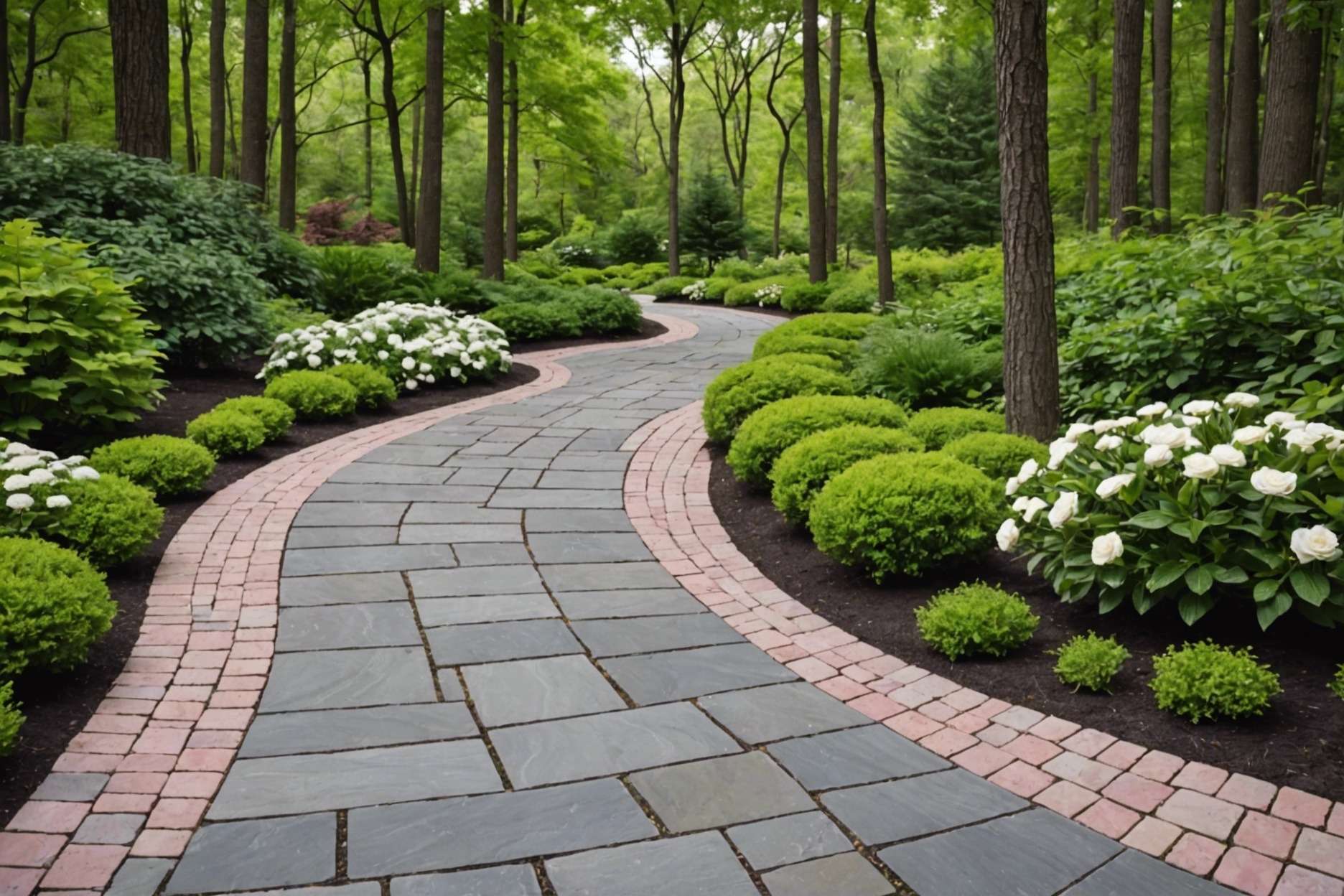
Visual Appeal of Grey Granite Slabs
Grey granite slabs are a standout choice for modern landscaping due to their unique visual appeal. Here are some key characteristics:
- Texture and Color Consistency: Grey granite is known for its fine grain and uniform color distribution. This makes it an ideal backdrop for highlighting greenery and other elements in garden designs.
- Complements Modern Designs: The sleek, subtle tones of grey granite pair well with contemporary outdoor fixtures and minimalist themes. It enhances the overall aesthetic without overpowering the space.
- Versatility in Application: Whether used for patios, pathways, or driveways, grey granite slabs provide a durable and stylish surface that withstands the elements.
- Low Maintenance: Unlike other materials that might require frequent upkeep, grey granite maintains its look without much effort. Regular cleaning is typically all that’s needed to keep it in top condition.
- Eco-Friendly: Grey granite is a natural stone that doesn’t require chemical treatments, making it a sustainable choice for eco-conscious homeowners.
These characteristics make grey granite not only a practical choice for hardscaping but also a visually appealing one. It supports various design needs while offering long-lasting beauty and functionality.
Aesthetic Characteristics of Grey Sandstone Paving
Grey sandstone is a top choice for patio paving due to its natural beauty and range of colors from light silver to deep charcoal. It’s not just pretty; it’s practical too, standing up well to weather and wear:
- Natural Variations: Each sandstone slab is unique, featuring natural color variations that add character to outdoor spaces.
- Texture: Grey sandstone has a softer texture, which contributes to a warm and inviting feel underfoot.
- Durability: It resists weather impacts, from harsh sun to freezing temperatures, especially when sealed properly to avoid color fading and surface damage.
- Maintenance: With just light cleaning and periodic resealing, grey sandstone maintains its beauty and functionality over time.
Incorporating grey sandstone into your outdoor design enhances the space’s aesthetic and functionality:
- Design Versatility: Fits various architectural styles, from modern to traditional, enhancing the overall look of your home.
- Outdoor Focal Points: Sandstone circles can serve as captivating central features in garden designs, distinguishing entertainment areas.
- Complementary Features: Works well with outdoor lighting, plants, and decorative elements to create a cohesive and stylish outdoor environment, learn more about incorporating natural elements in your design here.
Choosing the right sandstone involves considering the color scheme of your outdoor area, the desired texture, and the size and thickness of the slabs to ensure a perfect match and long-lasting enjoyment.
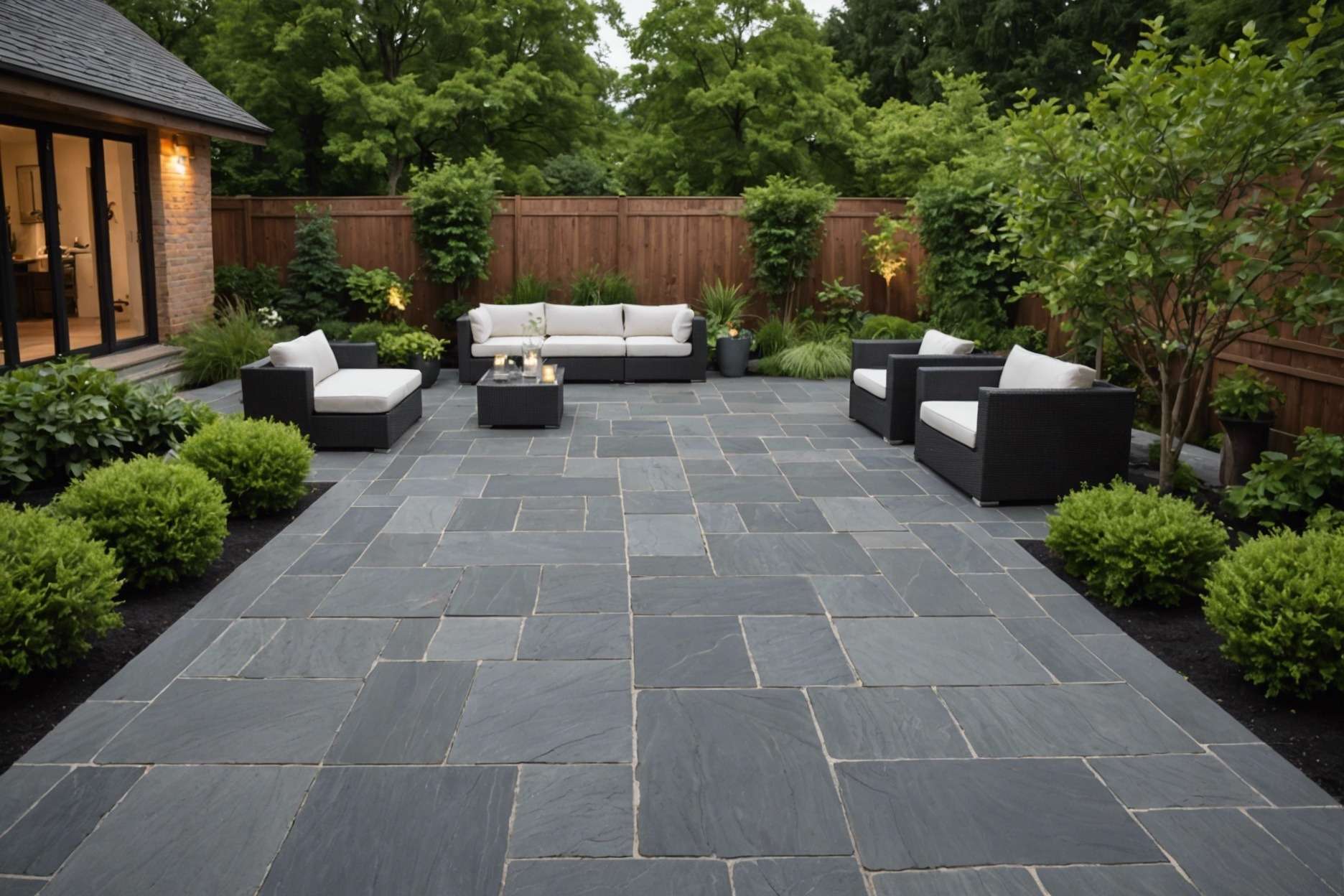
Comparative Analysis and Usage Recommendations
When choosing between granite and sandstone pavers for outdoor projects, it’s important to consider their characteristics and how they fit into your specific needs:
- Granite Pavers:
- Durability: Highly durable, resistant to scratching, staining, and chipping. Handles extreme weather like temperature fluctuations and direct sunlight.
- Maintenance: Requires periodic sealing to maintain its appearance and durability. Easy to clean with mild soap and water.
- Aesthetic and Functionality: Offers a unique, natural beauty with a limited color range. Highly resistant to UV rays, ensuring no fading.
- Cost and Installation: Higher initial cost but adds significant value to the property. Installation can be complex.
- Learn more about our granite services here.
- Sandstone Pavers:
- Durability: More porous than granite, making it susceptible to water marks, staining, and erosion.
- Maintenance: Requires regular sealing and maintenance to prevent damage due to its porosity.
- Aesthetic: Provides a natural, earthy look with vibrant color options, appealing for those seeking an environmentally friendly choice.
- Discover our sandstone solutions here.
Practical Advice:
- Climate Considerations: For hot climates, materials like granite resist heat well. In colder regions, granite also excels by resisting freeze-thaw cycles, find more about managing outdoor materials in different climates here.
- Longevity and Value: Both materials offer long-lasting features, but granite typically provides better longevity and added property value.
- Aesthetic Preferences: Choose granite for a more traditional, elegant look or sandstone for a rustic, natural aesthetic.
Conclusion: Selecting the right material depends on your climate, the intended use, and maintenance willingness. Both granite and sandstone have unique benefits that can enhance the beauty and functionality of outdoor spaces.
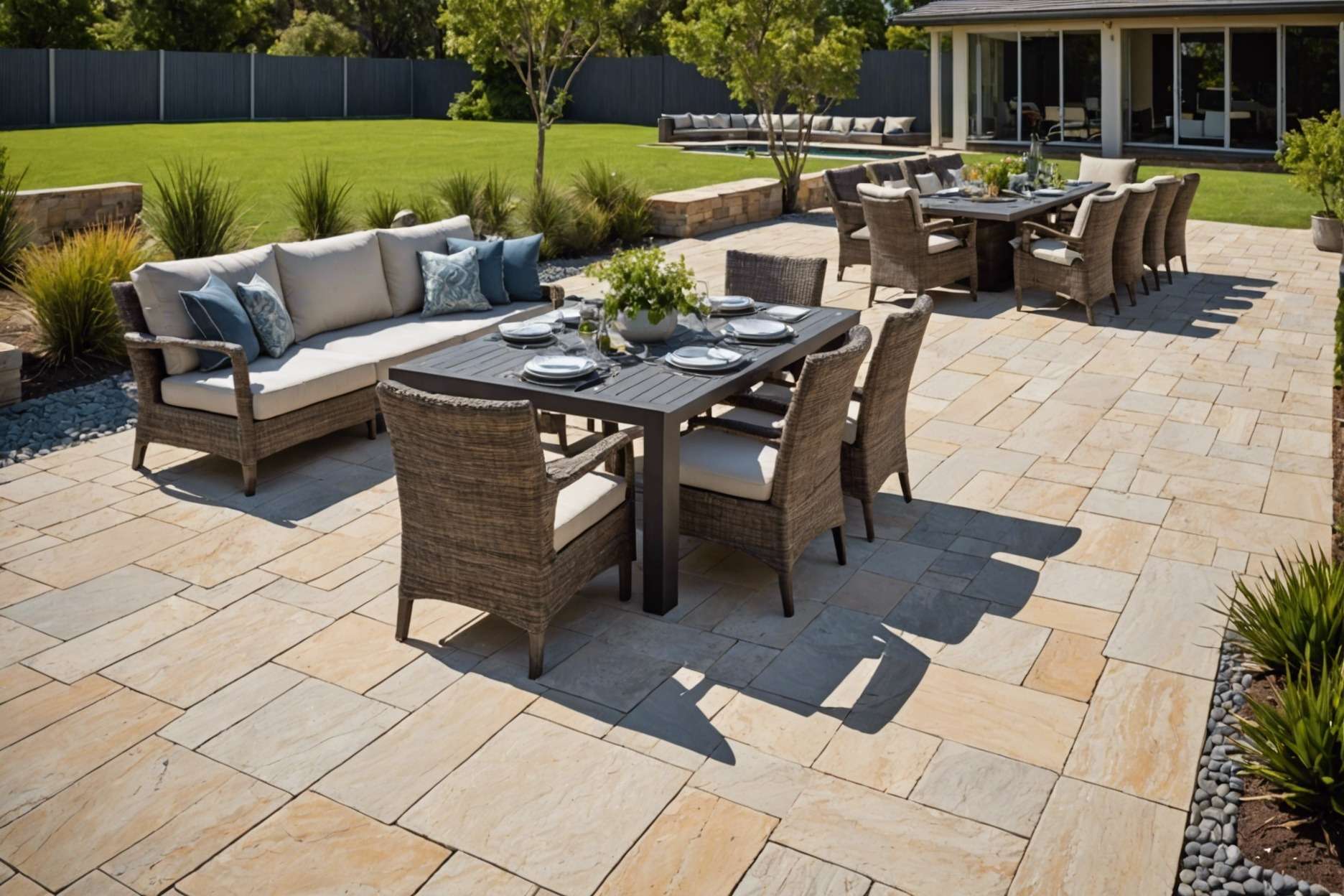
FAQ
What are the main differences between granite and sandstone pavers?
Granite is extremely durable, with high resistance to scratching, staining, and weather changes, while sandstone is more porous and requires more maintenance to prevent staining and erosion. Granite offers a classic aesthetic with a limited color range, whereas sandstone provides a more earthy appearance with varied colors.
Which is more durable, granite or sandstone?
Granite is generally more durable than sandstone. It is highly resistant to weather conditions, scratching, staining, and chipping. Sandstone, being more porous, is susceptible to water marks, staining, and erosion if not regularly maintained and sealed.
How should granite and sandstone pavers be maintained?
Granite pavers require periodic sealing to maintain their appearance and durability but are relatively easy to clean with mild soap and water. Sandstone pavers demand more frequent sealing due to their porosity, alongside regular maintenance to prevent damage and preserve their natural beauty.
Are granite pavers suitable for all climates?
Yes, granite is well-suited for a range of climates. It resists extreme temperatures, whether hot or cold, and is particularly effective at resisting freeze-thaw cycles, making it a versatile choice for various geographical locations.
What are some aesthetic characteristics of grey granite?
Grey granite slabs are known for their fine grain and uniform color distribution, which complements modern design themes and provides a durable, low-maintenance, and eco-friendly option for hardscaping.
What makes grey sandstone ideal for patios?
Grey sandstone not only offers a natural range of charcoal to light silver colors but also features unique textural variations that add character to outdoor spaces. It is durable against weather conditions, maintains its functionality with basic care, and fits well with both modern and traditional styles.
Can sandstone be used as a focal point in garden designs?
Yes, sandstone circles and varied color patterns can serve as captivating central features in garden designs, especially when paired with suitable outdoor lighting, plants, and decorative elements to create a cohesive and stylish environment.
What should be considered when choosing between granite and sandstone for outdoor projects?
Consider the material’s durability, maintenance needs, aesthetic qualities, cost, and how it fits into the specific climatic conditions of the area. While granite offers longevity and adds value to the property, sandstone appeals for its natural look and vibrant color options.
How does the initial cost and installation of granite compare to sandstone?
Granite typically has a higher initial cost and can be complex to install, but it adds significant value to the property. In contrast, sandstone may be less expensive initially but requires more frequent maintenance to preserve its condition and appearance.
